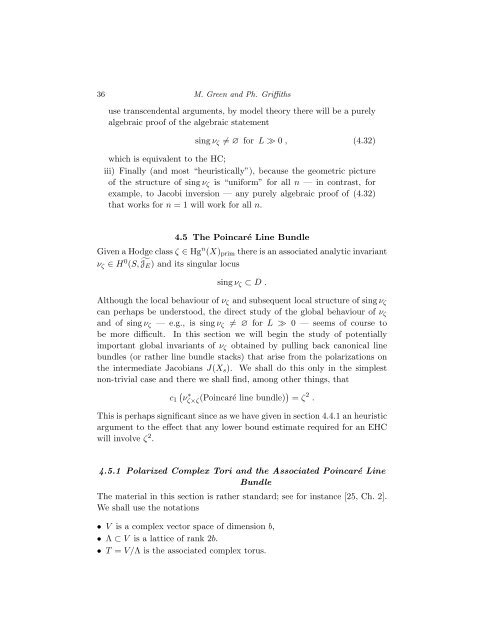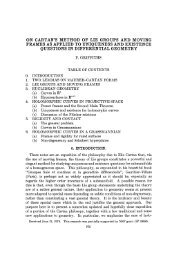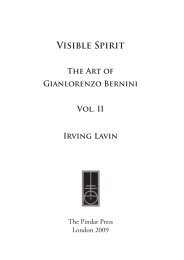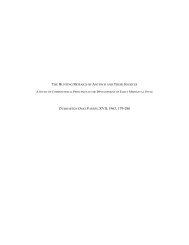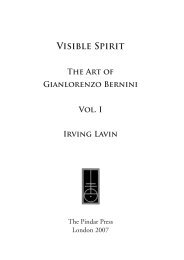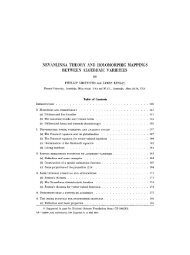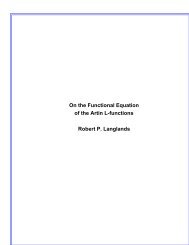4 Algebraic Cycles and Singularities of Normal Functions
4 Algebraic Cycles and Singularities of Normal Functions
4 Algebraic Cycles and Singularities of Normal Functions
Create successful ePaper yourself
Turn your PDF publications into a flip-book with our unique Google optimized e-Paper software.
36 M. Green <strong>and</strong> Ph. Griffiths<br />
use transcendental arguments, by model theory there will be a purely<br />
algebraic pro<strong>of</strong> <strong>of</strong> the algebraic statement<br />
sing νζ = ∅ for L ≫ 0 , (4.32)<br />
which is equivalent to the HC;<br />
iii) Finally (<strong>and</strong> most “heuristically”), because the geometric picture<br />
<strong>of</strong> the structure <strong>of</strong> sing νζ is “uniform” for all n — in contrast, for<br />
example, to Jacobi inversion — any purely algebraic pro<strong>of</strong> <strong>of</strong> (4.32)<br />
that works for n = 1 will work for all n.<br />
4.5 The Poincaré Line Bundle<br />
Given a Hodge class ζ ∈ Hgn (X)prim there is an associated analytic invariant<br />
νζ ∈ H0 (S, JE) <strong>and</strong> its singular locus<br />
sing νζ ⊂ D.<br />
Although the local behaviour <strong>of</strong> νζ <strong>and</strong> subsequent local structure <strong>of</strong> sing νζ<br />
can perhaps be understood, the direct study <strong>of</strong> the global behaviour <strong>of</strong> νζ<br />
<strong>and</strong> <strong>of</strong> sing νζ — e.g., is sing νζ = ∅ for L ≫ 0 — seems <strong>of</strong> course to<br />
be more difficult. In this section we will begin the study <strong>of</strong> potentially<br />
important global invariants <strong>of</strong> νζ obtained by pulling back canonical line<br />
bundles (or rather line bundle stacks) that arise from the polarizations on<br />
the intermediate Jacobians J(Xs). We shall do this only in the simplest<br />
non-trivial case <strong>and</strong> there we shall find, among other things, that<br />
∗<br />
νζ×ζ (Poincaré line bundle) = ζ 2 .<br />
c1<br />
This is perhaps significant since as we have given in section 4.4.1 an heuristic<br />
argument to the effect that any lower bound estimate required for an EHC<br />
will involve ζ 2 .<br />
4.5.1 Polarized Complex Tori <strong>and</strong> the Associated Poincaré Line<br />
Bundle<br />
The material in this section is rather st<strong>and</strong>ard; see for instance [25, Ch. 2].<br />
We shall use the notations<br />
• V is a complex vector space <strong>of</strong> dimension b,<br />
• Λ ⊂ V is a lattice <strong>of</strong> rank 2b.<br />
• T = V/Λ is the associated complex torus.


